Patagonia, Arizona is a quirky village with just about one of everything: one bar, one coffee shop, one gas station. A two-lane highway winds through the Santa Rita and Patagonia mountain ranges, transforming into the sleepy town’s main road.
The rolling hills around Patagonia unite the rough peaks of the mountains with Arizona’s sweeping desert. The 900-person town sits nestled in the foothills of Red Mountain, just 20 miles from the U.S.-Mexico border and an hour’s drive from Tucson.
In spite of the peaceful scenery, Patagonians are bitterly divided over a new mining project. Half of the town supports Arizona Mining Inc., a Canadian company that recently bought land near town for exploratory drilling and promises to create jobs. The other half of the town is fighting the mining company at every turn, seeking to preserve the region's unique wildlife and steer the economy toward environmental restoration.

OLD MINING TOWN
Abandoned mines speckle the mountains here. The United States acquired present-day southern Arizona from Mexico in 1853 and mining surged quickly thereafter. Silver, lead, copper and gold lured newcomers to the Patagonia Mountains, despite the constant threat of Apache raids. The land was largely ungoverned, sparsely populated, and teeming with opportunity for anyone brave enough to stake a claim and invest in the mineral market.
Over the follow decades, the New Mexico and Arizona Railroad expanded, connecting Patagonia to Nogales, Mexico. Small villages—now only ruins—popped up alongside mining camps in the mountains and business boomed for several generations, slowing with the Great Depression, and rising again during World War II. Some Patagonians today trace their families back to the original prospectors of the nearby mountains. Their families settled here to mine and they don’t intend to leave.
Mining didn’t last long after the end of the war – the demand for metals decreased sharply and the ore bodies dried up. The effect on Patagonia, and the surrounding Santa Cruz County, was severe. The railroad shut down, and by the 1960’s, mining had nearly disappeared. Today, there are no active mines in Santa Cruz County and there hasn’t been any significant mining in the region for decades.
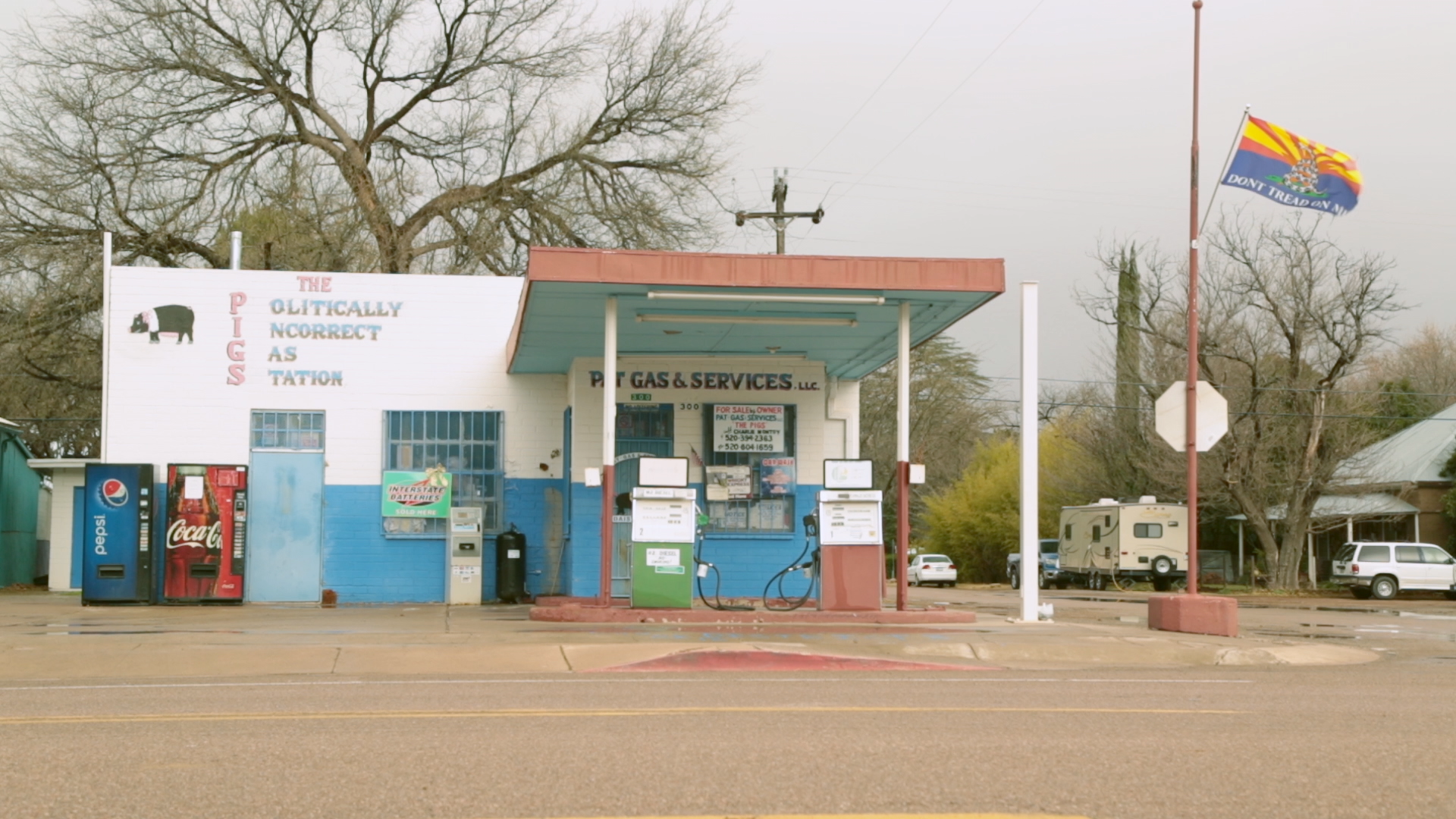

Around the same time, artists and hippies began moving to the region. Property was cheap and the mountains provided an abundance of artistic inspiration. Gooch Goodwin, a Patagonia native who comes from a long-time ranching family, remembers newcomers taking on work at local ranches and infusing the town with new energy.
“They really changed the flavor of the town to more of an artsy-type community,” Goodwin said. “They were these young hippies looking for some place to make a start.”
Other old-timers remember it differently. They say the hippies fundamentally shifted the town’s culture from blue-collar to bohemian. Charlie Montoy, the owner of the Politically Incorrect Gas Station ("PIGS") on the town’s main road, describes newcomers as “cultural thieves.”
“They come here from their big cities and like the small-knit community,” he said. “But all of the sudden they want to change the community. They’re bringing in their city ways.”
ABANDONED MINES IN SANTA CRUZ COUNTY
SKY ISLANDS
Mining has declined, but a new industry – tourism – has helped Patagonia’s economy stay afloat. The unique ecosystem in the Patagonia Mountains is part of Arizona’s “Sky Islands,” a term used to describe the lush mountain forests jutting out of Arizona’s flat desert lowlands. This region is an international destination for birdwatching and is home to threatened species like the Yellow-Billed Cuckoo and Mexican Spotted Owl. The only known jaguar left in the United States, fondly called “El Jefe” (“The Boss”) by locals, roams the mountains here. Ocelots, nearly impossible to find anywhere else in the country, have been spotted in the region.
In the winter months, retirees from colder climates flock to Patagonia for its mild weather. The monsoon season in late summer dumps rain across the Sky Islands, filling creeks and soaking into the aquifers that supply the town’s wells with drinking water. Hunters, eco-tourists, and backpackers pass through the Patagonia Mountains each year, spending their money at the Patagonia RV Park, the local art galleries and on coffee and lunch at Gathering Grounds, the town’s cafe and unofficial hub of social activity.
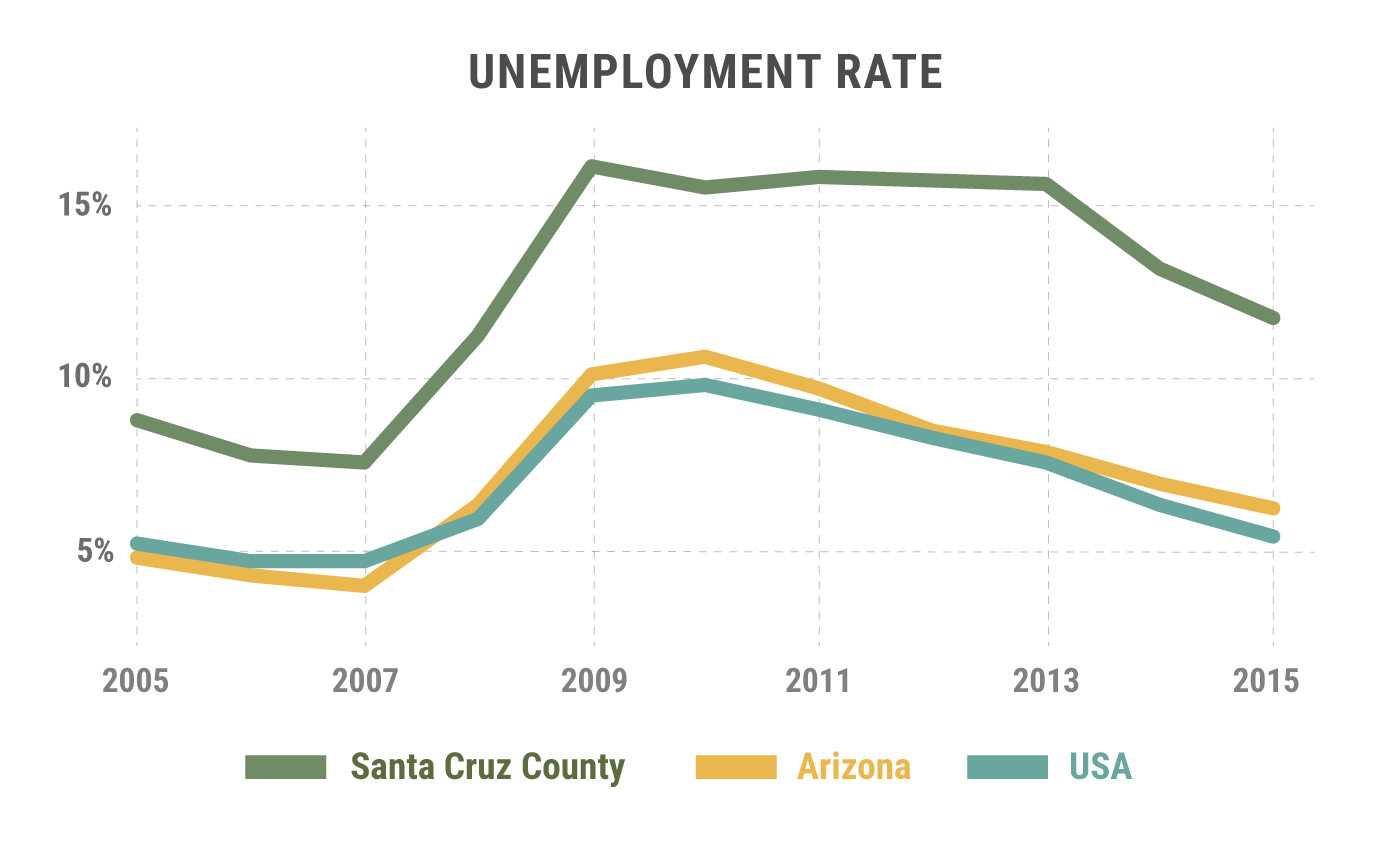
Despite the business gains from tourism, some Patagonians are nervous about the town’s future and what the economy of a rural Arizona community will look like in the coming decades.
Patagonia is situated on the east side of Santa Cruz County, one of the poorest in Arizona. In January of 2017, 9.5 percent of the county’s workforce was unemployed – nearly double Arizona’s statewide unemployment rate.
Without an active mining industry, the fresh produce industry accounts for 22 percent of the county’s jobs, most of which are related to the Port of Nogales, where produce flows from Mexico for distribution in the U.S. The county doesn’t have many of its own farms, but the business of moving produce across the border requires a steady workforce. Government jobs – at the Forest Service, Border Patrol, and in local administrative offices, for example – make up another 19 percent of the county’s jobs.
Brent Bowden, a Patagonia native and owner of an excavation company in town, worries that the poor economy encourages young people to get involved in smuggling. The constant flow of drugs and people across the border creates a lucrative industry. If there was another industry that paid well, Bowden believes that more young people would try to make money legally.
“I just want to see the local area come back to life,” said Bowden.
For some, a new mining project is a solution to their fears—a chance to renew the industry that put Patagonia on the map. “With the economy, it’s been very hard,” said Michelle Spurr, who works at a restaurant in town. Spurr’s fiancé was unemployed and struggling to find any work in the area before he got hired by a drilling contractor working for Arizona Mining Inc. The couple has three children in Patagonia’s public school, and they hope that the new job will finally make it financially feasible for them to get married and pay for a wedding.
“I try to have the most unbiased position on the drilling,” Spurr said, explaining that taking a position on mining might be bad for business at the restaurant. But the new income, she said, has been a blessing for her family.
Spurr isn’t the only person concerned about how her opinions might affect business. Bowden and Montoy both said they lost customers after openly supporting the mining company. Multiple business owners in town refused interview requests, citing concerns about publicly taking a position on Arizona Mining Inc.’s project.
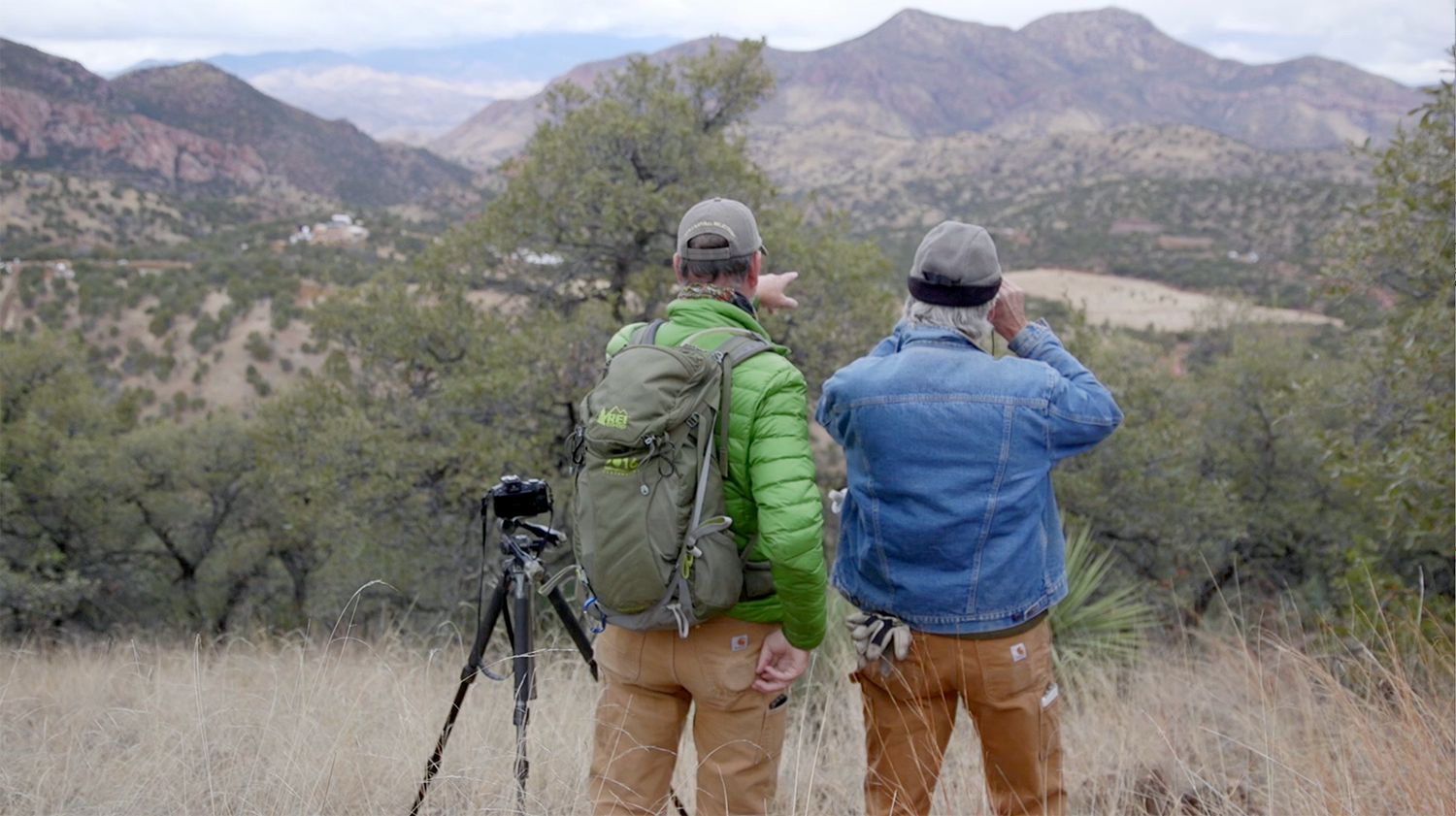

Goodwin, who spent years working as a fire lookout for the Forest Service, opposes the drilling. He said he doesn’t fault anyone who takes work with the mining company. But he doesn’t believe that the company will ever make good on their promises to create long-term, sustainable jobs. “[The mining company] would like you to believe that if this does become a mine, it’s going to be the best thing for jobs and the economy,” he said. “It’s not. I don’t believe it is.”
Goodwin, and his colleagues at the Patagonia Area Resource Alliance (PARA), a group that opposes mining near the town and aims to protect wildlife, say the time for extractive industries is long past and investment in restoration and sustainability is the only way forward.
“If we recycled what we had, we wouldn’t have to dig anything more out of the ground,” said Cliff Hirsch, the director of PARA. He thinks the project Arizona Mining Inc. is developing has little to do with actually providing the world with minerals. Instead, he believes the project is just a way for Arizona Mining Inc. to make money from investors in the short term.
“The only people making money are the mining company and the politicians,” Hirsch said.
To emphasize the need for sustainability, Goodwin points to the dozens of abandoned mines in the Patagonia Mountains that are environmental and health hazards. One of the mines—The Lead Queen, just a few miles outside of town—flooded after a major storm in 2014. Dark orange water with high iron levels poured out of the shaft and into a nearby creek. Leaky mines, Goodwin said, are constant threat to the aquifer that supplies the town’s drinking water.
Arizona Mining Inc.’s supporters say that government regulations on water quality and the onerous permitting process proposed mines must undertake will prevent any of the water contamination and long-term environmental damage that worry PARA members.
A FAILED OPEN PIT PROJECT
The history of Arizona Mining Inc. is confusing. Despite its name, the company is based in Vancouver, Canada, and is publicly traded on the Toronto Stock Exchange. As a junior mining company, it only performs exploratory operations. The company has never operated a mine or actually sold any minerals. Like other speculative industries, junior mining companies rely on investors to buy stock and fund the company’s exploration. If the junior company discovers a viable mineral deposit, they usually cash out and sell their findings to a larger mining company to develop. But for now, Arizona Mining Inc. officials say they don’t plan to sell and will try to develop a mine themselves.
The company first acquired property in the Patagonia Mountains in 2006, under the name “Arizona Minerals, Inc.” Later that year, the company changed its name to “Wildcat Silver Corporation” and began developing plans for an open pit silver mine, called the Hermosa Central project, about six miles south of Patagonia. Open pit mines are cut into the earth’s surface, creating deep basins. Some of the largest open pit mines are visible from space.
In 2011, the Forest Service, which controls national forest land, granted Wildcat Silver approval to expand the Hermosa Central project to public land. It’s common for private companies to drill on public land, but federal law requires that mining company apply for permits and pass environmental studies.
According to a financial report compiled by Wildcat Silver in June, 2011, the company operated over 100 exploratory drill holes connected to the Hermosa Central project. That same year, the company also appointed Greg Lucero, vice mayor of Nogales, as a vice president of the company.
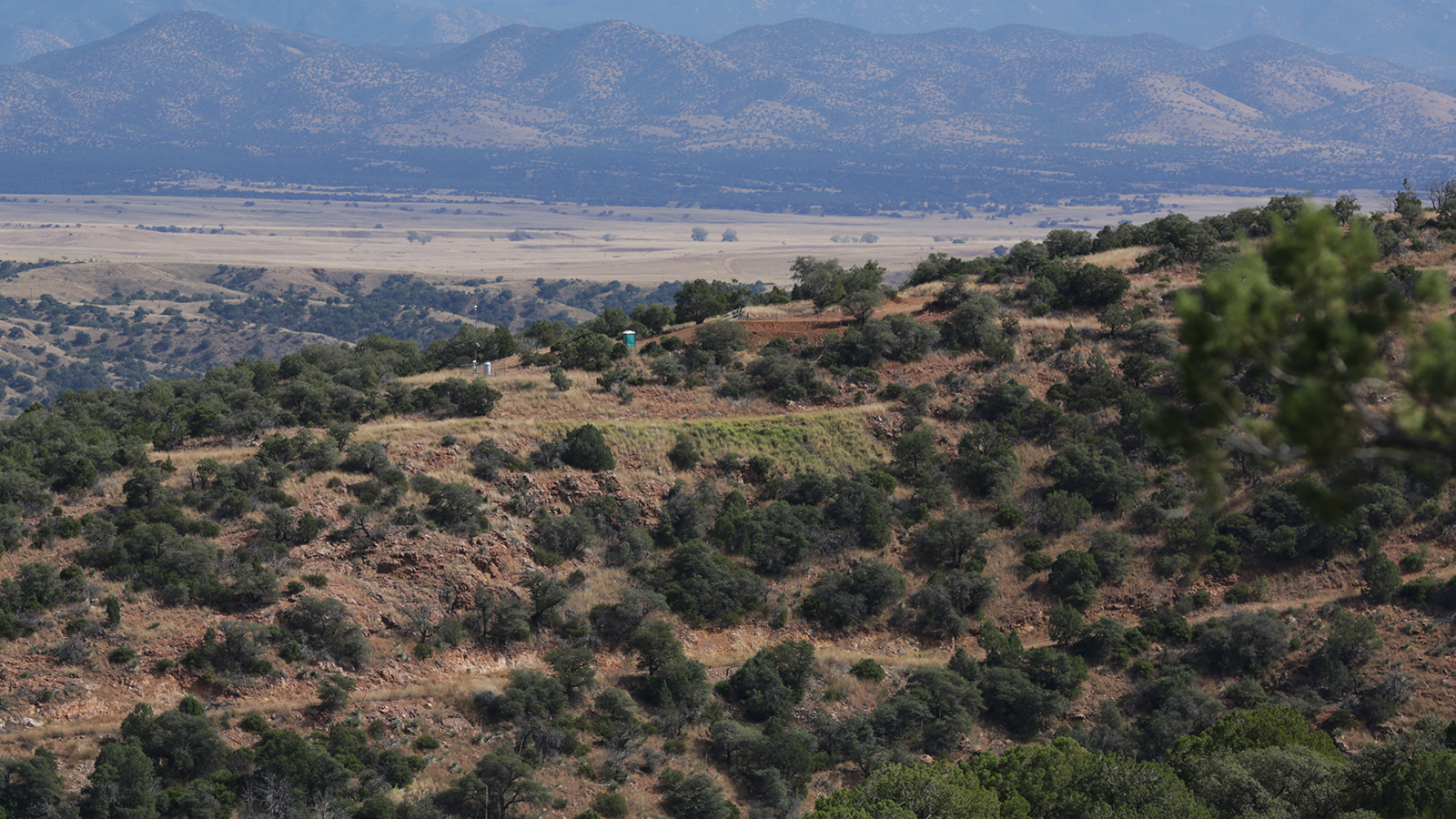
PARA strongly opposed the open pit project and worked with other environmental groups to file a lawsuit, claiming the company did not go through necessary environmental assessments. The Forest Service revoked approval of the project a year later, in 2012.
In 2015, the environmental assessment for the project was cancelled – the same year Wildcat Silver changed its name to Arizona Mining Inc.
Lucero said the company has no intention of developing an open pit mine in the future and it will instead use an underground system to access the minerals.
NEW DRILLING PROGRAM
The controversy in Patagonia today is an extension of an ongoing fight between the company and the environmental groups that sued to stop the open pit project. And just over a year ago, the fight again intensified.
In January of 2016, Arizona Mining Inc. acquired 300 acres of private property adjacent to the Hermosa Central project. The company quickly started a new exploratory drilling program, promising both locals and investors that they had hit a major silver deposit on their new private land. By the fall of 2016, Arizona Mining Inc. had 14 drill rigs operating on the property.
Unlike the previous open pit project, the new drilling project, called the Taylor project, is specifically for an underground mine, which would pose far fewer environmental concerns.
“An open pit requires stripping significantly more surface material to access the ore body,” Lucero said. The Taylor project’s ore is deep underground, so he said the less-disruptive underground approach made sense.
But PARA members don’t want to see any mining—open pit or underground. They continue to oppose the mine because even underground mining can cause contamination of the water supply and damage to the habitats of threatened species.
Arizona Mining Inc.’s website describes the project as “world class.” The company projects it will produce over 60 million tons of ore from the new deposit, according to a press release in April, 2017.
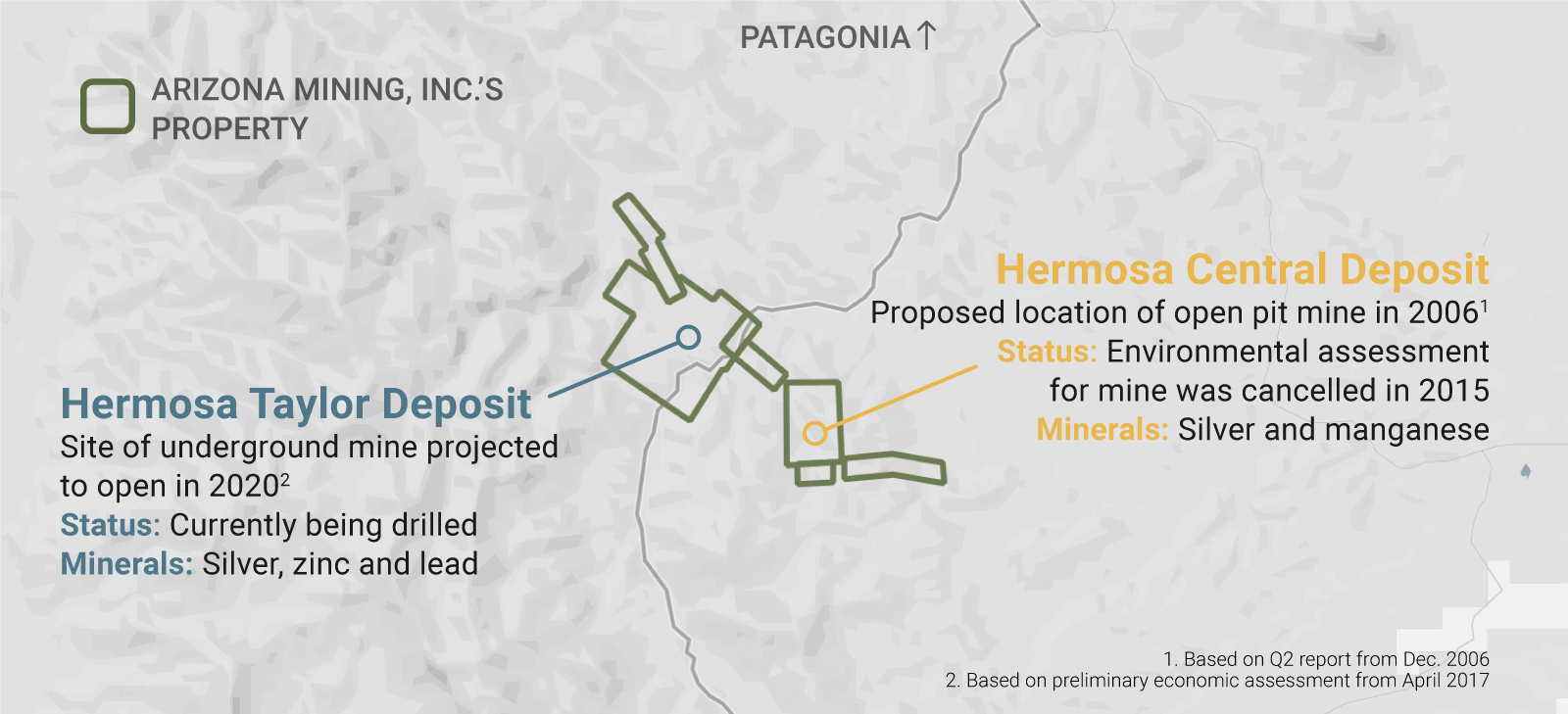
As part of the deal to buy the new property, Arizona Mining Inc. agreed to take on the responsibility for environmental cleanup on the land.
Abandoned mines worked by the property’s previous owners leaked contaminated water, so the company agreed to develop a water treatment system. Lucero said the company has submitted plans for the system to the Arizona Department of Environmental Quality and it’s currently under review.
Lucero also said that Arizona Mining Inc. has taken steps to stop the abandoned mines from leaking. “Mine-influenced water is no longer being discharged from the [property],” he said.
But PARA members aren’t satisfied with the information the mining company has given the public about their plans for avoiding water contamination.
Conflict in town over the drilling project intensified last summer, when the company again attempted to expand to public land. In September of 2016, AZ mining Inc. submitted a proposal to the Forest Service, which included plans for eight drill holes in the Coronado National Forest, close to the company’s private land. The drilling was planned to happen 24 hours a day for five months.
Environmental groups sprang into action, determined to stop the company from drilling on public land. There’s little private citizens can do to stop a company from drilling on their own land, but public land is a different story. A company must go through an environmental review process with the Forest Service that includes a public comment period. “That’s where we jump in,” said PARA’s coordinator Wendy Russell.
PARA hosted workshops for locals about how to write an effective public comment on specific environmental concerns about Arizona Mining Inc.’s project. “You can’t just say you’re not fond of what they’re doing,” Hirsch said. The comment “has to be a specific topic of concern that you think the Forest Service can do something about.”
Of the 82 public comments submitted, 64 asked the Forest Service to do a more rigorous environmental assessment or flat-out opposed the project. Of the 18 supportive comments, over half were from individuals who work for Arizona Mining Inc.’s contractors.
For Hirsch, in particular, the battle was personal. He purchased his house in 2006, right before the company started exploring the Patagonia Mountains. His house sits on a ridge deep in the mountains, about 10 miles from town and 1 mile from Arizona Mining Inc.’s property. Because the drilling operates 24 hours a day, Hirsch said he can hear the drone of the drills and see the bright lights surrounding the drill pads at all hours. By contrast, he recalled, before the drilling, the sky was pitch black at night and the loudest noise was the wind. He said he never would have bought his home if he had known exploratory drilling would take off.
“I was aware I was moving to a mining area, but the general feeling at that time was that everything was played out,” said Hirsch. “Why would any reasonable person attempt to do [more mining] and destroy more of this beautiful land?”
Yet other Patagonians have thrown their full support behind the drilling, hopeful that Arizona Mining Inc. will create jobs and financially support the town. “This whole town is going to go belly-up if this mine doesn’t come in here,” said Montoy, the gas station owner. He sees young people moving away as a significant threat to Patagonia’s future and he wants the town to return to the working-class values that he believes have slipped away.
“The mining will help bring families here,” said Stephanie Padilla, a waitress at the Home Plate restaurant. Her family has lived in town for generations and her grandfather was a miner. Her son attended Patagonia’s school until the year when there weren’t enough students to make a baseball team. He hopes to get a baseball scholarship to college, so Padilla now drives him to Nogales for high school so he can play. She said she’s especially hopeful that the drilling will create permanent jobs and help enrollment at the schools.
She has also seen the benefit of the drilling project at work. Home Plate started opening earlier in the morning to serve the drillers before their early morning shifts. “I make 30 extra dollars by 8:30 in the morning now,” Padilla said. The summer is normally the slow season for tourism in Patagonia because of the desert heat, but last summer Padilla said the drillers helped keep business steady at Home Plate.
When asked why so few people submitted public comments supporting the project, local supporters, who declined to share their names on the record, said community members were either afraid to speak up and risk being confronted by their anti-mining neighbors, or didn’t have access to the Internet to read the Forest Service announcements.
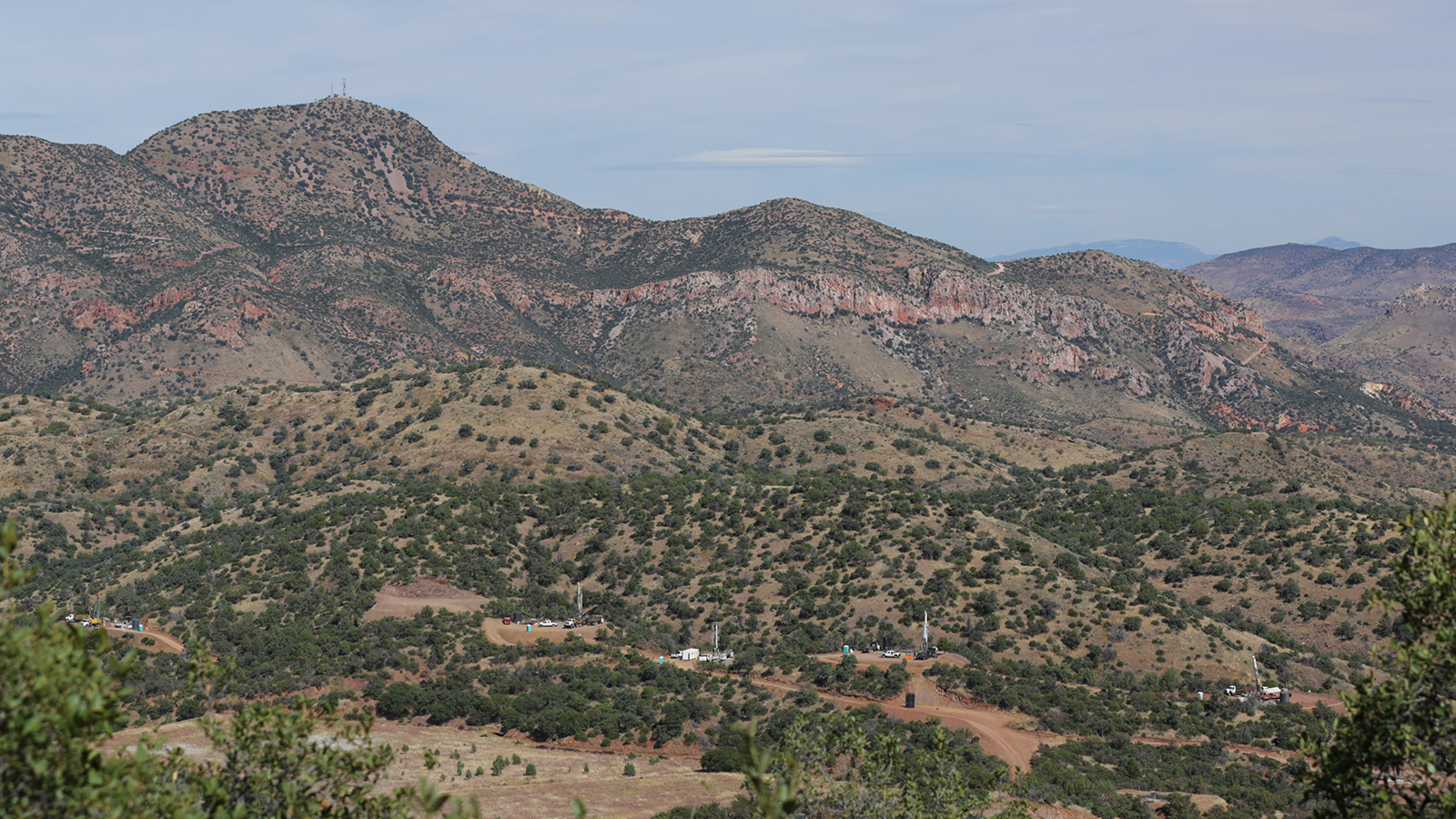
SIMMERING TENSION
In November, 2016, Arizona Mining Inc. cancelled their proposal to drill on public land, ending the Forest Service’s review process. Lucero said the decision was to avoid the cumbersome permitting process and instead contain the drilling to the company’s private land. “We will come back to [the Forest Service] with a drilling program that would justify spending 700 days in a permitting cue,” Lucero said. But for now, he said, the company does not have any immediate plans to expand onto public land.
The conflict, however, is far from over.
Patagonians who oppose the mine aren’t just concerned about environmental damage, many residents believe Arizona Mining Inc. won’t ever find anything worth mining.
“These mountains have already been mined,” said Hirsch. He thinks Arizona Mining Inc.’s executives are raising money from investors on false promises, claiming the mineral deposit is more viable than it actually is. He suspects the company will eventually sell their land and walk away, leaving the environmental mess from drilling for locals to clean up.
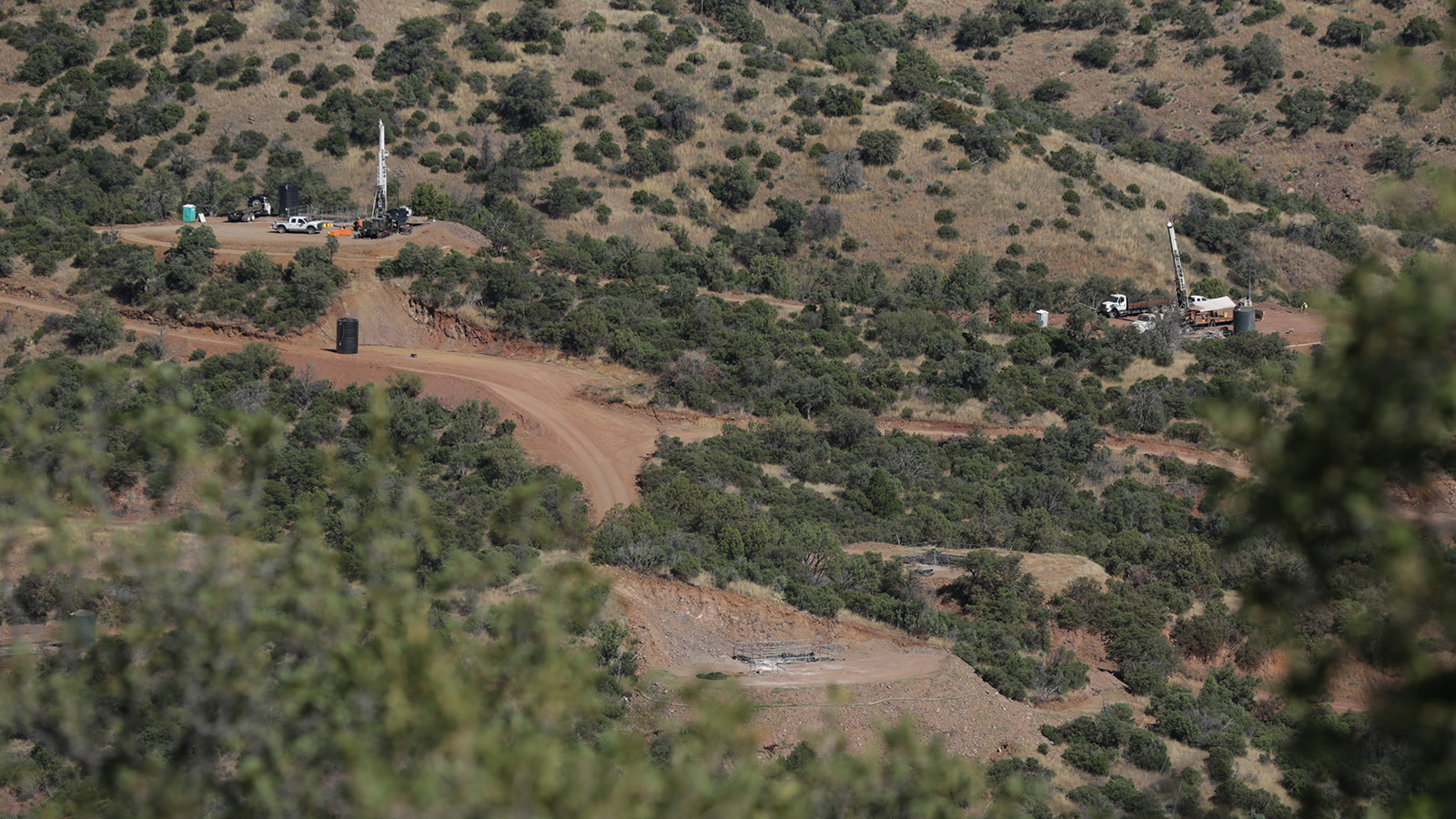

Part of the reason environmental groups are so skeptical of Arizona Mining Inc. is because they say the company is secretive about their business practices. As evidence of the company’s secrecy, Hirsch points to the signs along Harshaw Road, the public road that passes through Arizona Mining Inc.’s property, which he must take to get to his house from town. The signs warn: “NO CAMERA NO VIDEO NO CELL PHONE.”
A Patagonia resident, who refused to give her name because of worries about retribution from the company, said she had been stopped by the mining company’s security team when she stopped her car along the road. Hirsch and Goodwin both said they had been questioned by the company’s security guards when they stopped to take photos of the signs.
“It’s a shame they put those signs up because people travel around the world to get here to [birdwatch],” said Hirsch. “So, when you have signs that say people can’t take pictures, it sort of makes people not want to come back.”
Lucero said the signs exist because the company had problems with people trespassing and taking pictures on their property. “Law enforcement officials recommended that we post [the signs on the] property,” he said. “As a result we have not found anyone trespassing.”
A TOWN DIVIDED
Meet the Patagonians on both sides of the conflict.
THE RESTORATION ECONOMY
Mining isn’t the only way to create jobs in Patagonia, according to Borderlands Restoration, an organization formed in 2010 to protect biodiversity in the Sky Islands. The group—known locally as “Borderlands”—works on restoring waterways, repopulating native plants and protecting “wildlife corridors,” swaths of land that connect the Sky Island mountain ranges and create safe passage for migrating wildlife. Borderlands aims to create jobs by contracting with government agencies for environmental cleanup projects, selling plants from their nurseries and developing fee-based education programs.
The group does not take a formal position on mining, but its programs focus on environmental restoration, which has fundamental conflicts with mining’s extraction-based economy. The roads needed for mining, for example, can create erosion and destroy native wildlife, two problems Borderlands actively tries to prevent.
Though Santa Cruz County is one of the poorest in Arizona, it’s one of the richest in biological wealth, said Ron Pulliam, chairman of the board at Borderlands. He believes in an alternative approach to the economy of the entire region – on both sides of the U.S.-Mexico border. He hopes to see investment in environmental restoration through eco-tourism, local farming and restoration of wildlife habitats.
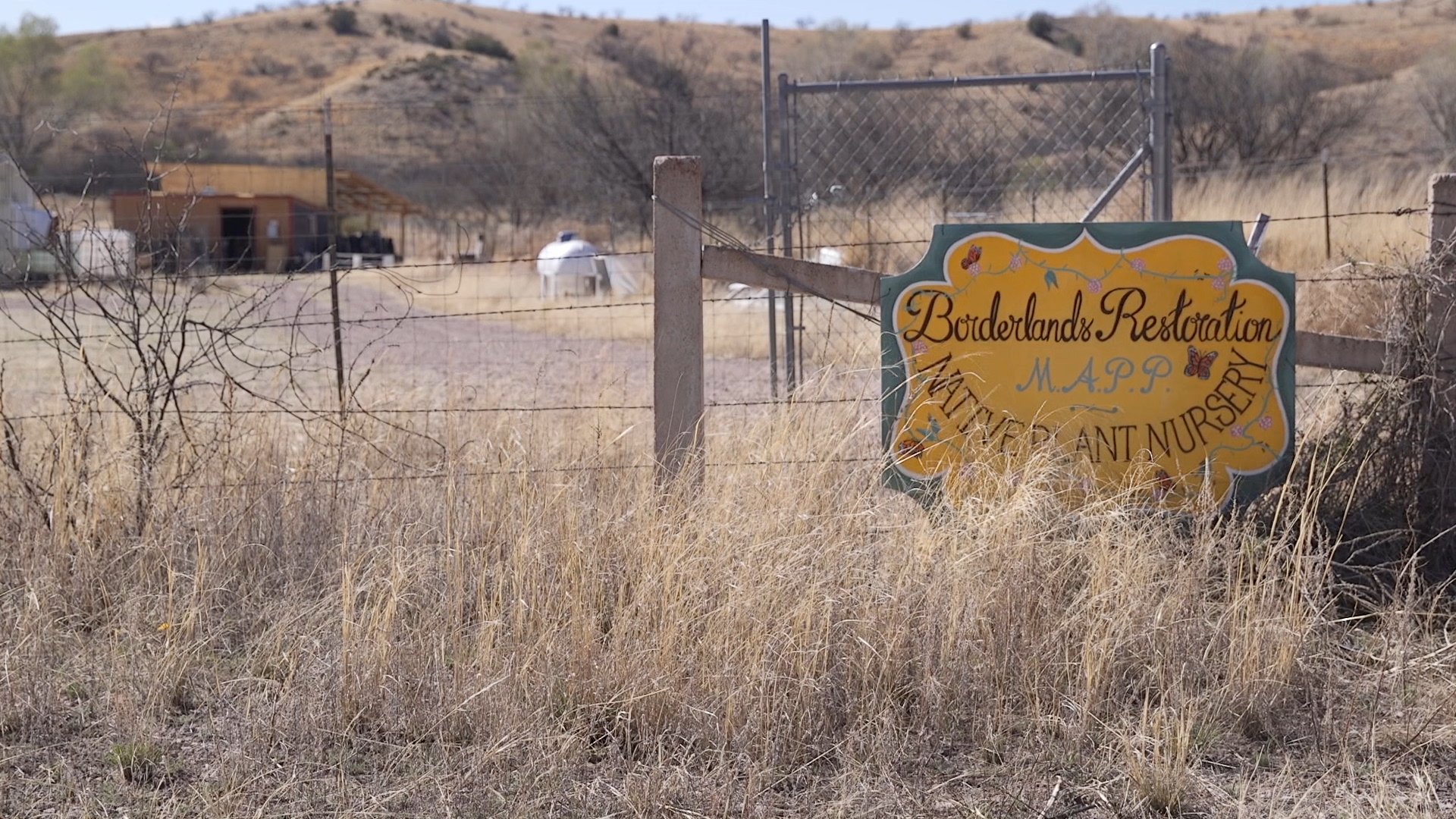
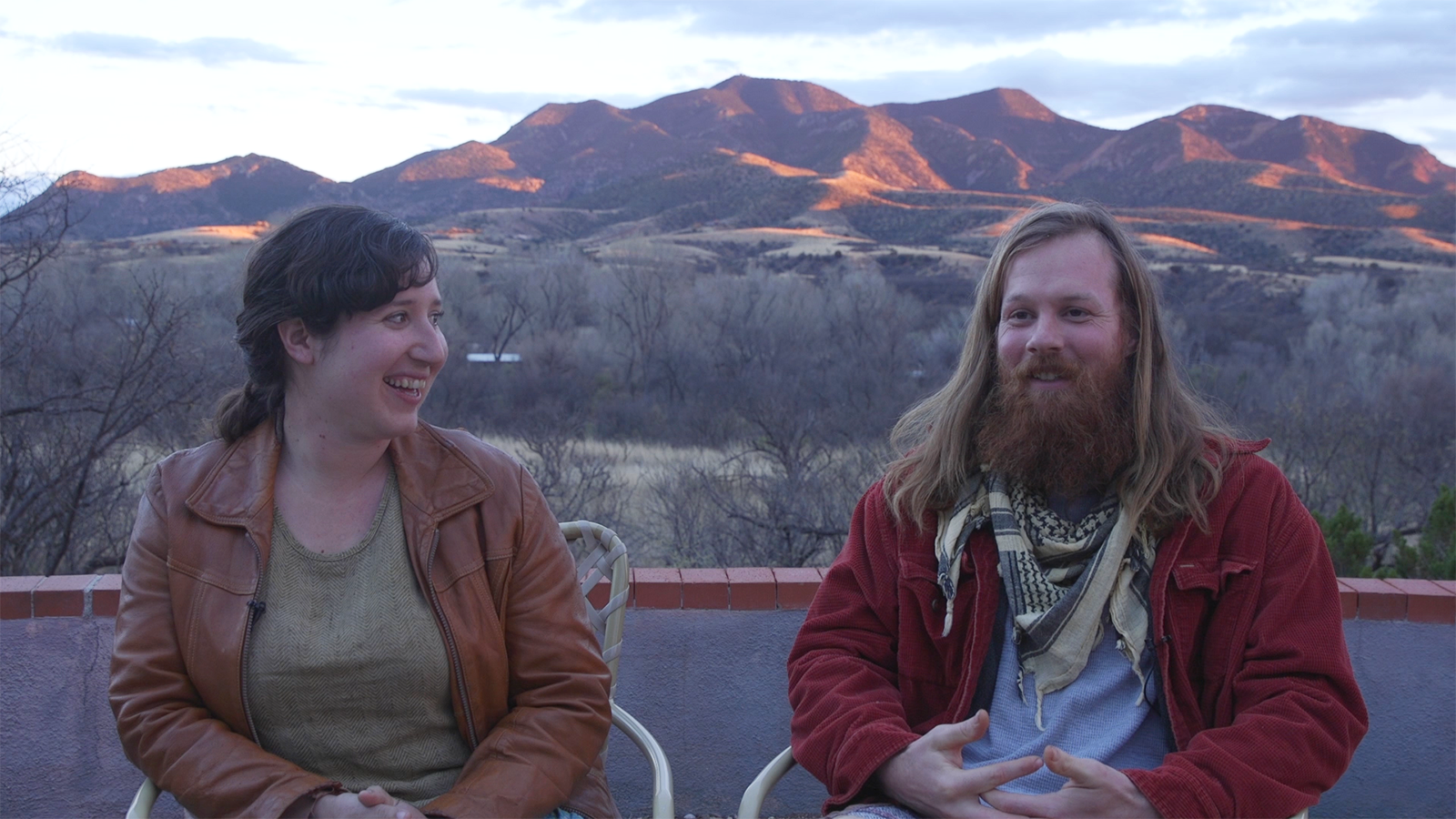
Borderlands has 20 employees and an additional half dozen attached to group’s nonprofit wing, Borderlands Habitat Network. “Sometimes it’s hard to fill jobs [at Borderlands] because there aren’t that many young people,” said Francesca Claverie, who moved to Patagonia in 2013 for a job with Borderlands. She noted that young people tend to gravitate toward jobs with the mining company because of it offers a 60-hour work week.
Claverie’s roommate, Ben Shonkwiler, stumbled upon Patagonia three years ago after taking a trip through Mexico. He loved the town and the mountains and decided to stick around, picking up part-time work with Borderlands and doing odd jobs. He said the lifestyle works for him, he but understands that some locals want more job security than Borderlands can offer. “It’s not consistent enough for some of these guys that have families and kids,” Shonkwiler said.
Claverie owns the house they live in, which has panoramic views of the Patagonia and Santa Rita Mountains. Both she and Shonkwiler plan to stay in Patagonia long term and continue working in restoration.
Though Borderlands has succeeded in creating jobs, the mining company’s supporters don’t see it as a substitute for mining. The organization’s finances depend on a mix of grants, contracts with government agencies like the Bureau of Land Management (BLM) and selling native plants and restoration services. President Donald Trump’s administration plans to slash funding for both BLM and the Forest Service. Grants may be less abundant during a presidential administration adamant on re-investing in extractive industries and abolishing environmental protection.
CONFLICT CONTINUES
In February, 2017, Arizona Mining Inc. reduced their drill rigs from 14 to 9 and began wrapping up their exploratory processes. In April, the company released a preliminary economic report detailing plans to have an operational mine on their private property by 2020. Lucero said that the company will employ 500 people between the mine itself and the water treatment facility, if the company can get the proper permits.
Patagonians are still debating whether the company will actually make it happen.
Michael Stabile, a town council member who is openly opposed to Arizona Mining Inc., believes the company will run out of money before they can open a mine. “They are really going to have to prove something amazing in order to get some kind of financial backing going forward,” Stabile said.
Montoy, from the gas station, describes the conflict as a class struggle. He says environmentalists are bringing big city values to a rural working class community, denying mining’s deep roots in the town. “I think a bunch of them are hypocrites,” Montoy said. “They wear jewelry, they have their laptops, their cell phones, their hybrid cars, and where does all of this come from? It comes from mining.”
Bowden’s excavation company has a long-term contract with Arizona Mining Inc. to provide logistical support, like constructing roads to the drill rigs and transporting water. His business is now deeply invested in the drilling project and he is confident the company will open a successful mine. “We’re now starting to funnel all of our cards into this one basket,” said Bowden, who has 32 employees working on the drilling project. “It’s great. It’s an opportunity to work on a world-class project 15 minutes from where I choose to live.”
For PARA members, the fight continues. “We’re throwing everything in the kitchen sink at them,” said Russell, describing PARA’s commitment to stopping the mine. But for now, since the project is still on private land, there’s little anyone at PARA can do to stop it.
Produced by Lucas Waldron at the UC Berkeley Graduate School of Journalism
Advisors: Richard Koci Hernandez, John Temple, Jeremy Rue and Kara Platoni
Contact